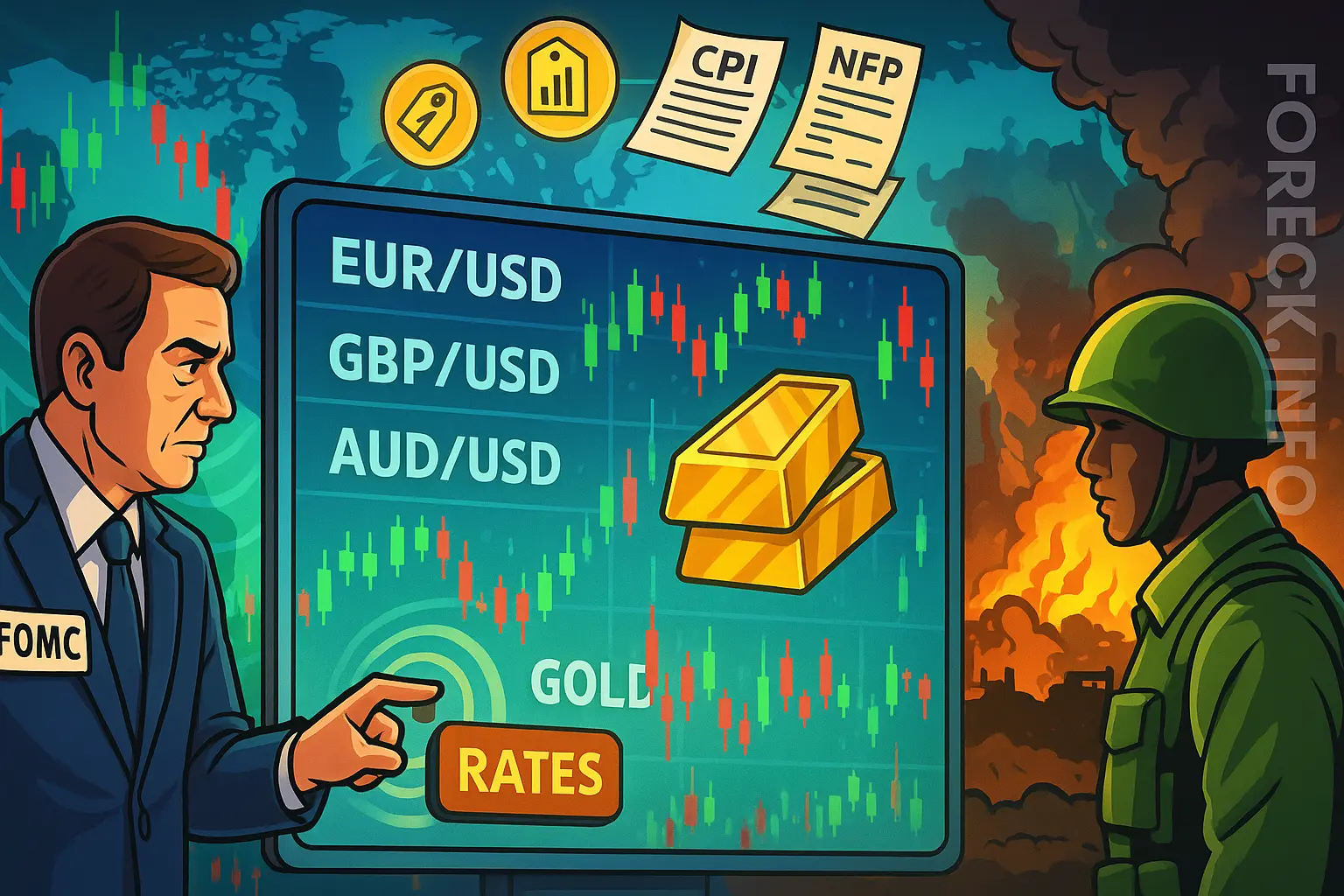More nations are actively seeking alternatives for cross-border settlements, such as gold or digital assets, as the White House presses forward with its tariff plans. Markets reacted negatively to Trump’s announcement that the U.S. will soon notify global partners of new unilateral tariffs to be implemented following the expiration of a temporary moratorium in early July. Despite headlines of a consensus in U.S.–China talks, optimism remains muted: key details are missing and Beijing has yet to officially comment.
Some short-term support for the greenback comes from escalating Middle East tensions, with Israel launching a military operation against Iran’s military and nuclear facilities. Tehran has promised retaliation, and reports suggest possible U.S. military involvement. Analysts note that while such geopolitical risks could offer the dollar limited support in the near term, sustained upside is unlikely.
Recent German inflation data had a neutral impact, with annual CPI up 2.1% in May and a 0.1% monthly increase. Earlier in June, the ECB cut its key rate by 25 basis points to 2.15%. While the move suggests the end of the easing cycle, the region still faces tepid economic growth. Uncertainty over U.S. tariffs and the ongoing Russia–Ukraine conflict in Eastern Europe further clouds the outlook for the euro.
GBP/USD: Pound Weakens Amid Safe-Haven Demand and Soft Economic Data
Sterling is under pressure against the U.S. dollar, giving back recent gains and pulling back from late-February 2022 highs. The bearish move is driven by a technical correction and renewed demand for the dollar as a safe-haven asset amid deepening Middle East turmoil. Israel’s overnight military operation against Iranian facilities resulted in casualties among top military officials, including General Mohammad Bagheri.
In addition to geopolitical stress, the pound is weighed by disappointing macro data. UK GDP contracted by 0.3% in April, reversing a prior 0.2% increase and underperforming the –0.1% consensus. Industrial output fell 0.6%, extending the previous month’s 0.7% drop, as expectations were set for only a 0.5% decline. Weakening economic momentum increases the likelihood that the Bank of England will accelerate rate cuts or consider further quantitative easing.
Meanwhile, U.S. data point to a softening inflation environment, with the core PPI excluding food and energy falling from 3.2% to 3.0% in May (vs. a 3.1% forecast), although the broader index ticked up from 2.5% to 2.6%. Markets are now focused on potential adjustments in Fed monetary policy.
AUD/USD: Aussie Pressured by Geopolitical Tensions and Mixed Macro Signals
The Australian dollar is sliding against the U.S. dollar during Asian trade, giving up gains as the pair tests the 0.6470 level to the downside. Geopolitical risk is once again at the forefront, with Israel conducting large-scale strikes in Tehran, Natanz, and other Iranian cities, leading to the deaths of senior military and nuclear program officials. Tehran has vowed a "mirror" response and accused the U.S. of coordination.
The dollar may see limited support from these events, but analysts remain skeptical about its long-term prospects amid a host of headwinds. Market sentiment soured further after President Trump announced that new unilateral U.S. tariffs will soon be communicated to trading partners. The recent U.S.–China consensus has yet to instill confidence, as official details are sparse.
Investors are also adjusting for likely shifts in Fed policy, as inflation pressure continues to wane. The latest U.S. core PPI slowed to 3.0% from 3.2% (vs. 3.1% projected), while the headline figure rose slightly to 2.6%. In Australia, new inflation projections from the University of Melbourne now see annual CPI possibly climbing from 4.1% to 5.0%. This increases the odds that the RBA will hold rates steady, or even contemplate further hikes to control price growth.
USD/JPY: Dollar-Yen Sees Volatility Amid Missile Strikes and Weak Japanese Data
USD/JPY is trading with mixed momentum near 143.75, after briefly touching lows last seen on June 5. Market moves reflect a risk-off reaction to Israeli missile strikes on Iran, targeting both military and nuclear sites. Iranian officials confirmed the deaths of key scientists and generals, and signaled intent to retaliate, while the U.S. reiterated it was not involved and warned against attacks on its own bases.
The yen also came under pressure after soft macro data: Japanese industrial production dropped 1.1% MoM in April (from –0.9% previously), and YoY growth slowed to 0.5% from 0.7%. Capacity utilization, however, rebounded 1.3% after a –2.4% slide last month. The services PMI rose 0.3% (vs. –1.0% previously and a 0.2% forecast). Looking ahead, investors await the Bank of Japan's June 16–17 meeting, where consensus expects no rate hike and a possible return to selective quantitative easing to support the fragile recovery.
For U.S. investors, the University of Michigan’s consumer sentiment index (due at 16:00 GMT+2) is the key release. Consensus expects a rise from 52.2 to 53.5, which could provide minor support to the dollar.
XAU/USD: Gold Rallies on Geopolitical Escalation and Dollar Weakness
Gold prices are rallying sharply, with XAU/USD pushing above $3,425 amid a robust bullish impulse that has driven the metal off late-May lows. The current uptrend is closely linked to heightened Middle East conflict, as Israel's strikes on Iran have triggered a flight to safety among global investors.
Iran has vowed retaliation and accused the U.S. of orchestrating the strikes. While such risks can buoy the dollar in the short term, analysts are skeptical of a sustained dollar rally given other negative macro forces. Dollar sentiment took another hit after President Trump signaled new unilateral tariffs to be announced in July. Meanwhile, optimism about a U.S.–China trade consensus remains muted due to lack of official detail.
On the monetary policy front, U.S. producer price data released yesterday reinforced a view of moderating inflation, with the core PPI dropping to 3.0% and the headline measure rising to 2.6%. Markets anticipate further Fed adjustments, but for now, gold continues to benefit as a defensive asset in an increasingly uncertain environment.

